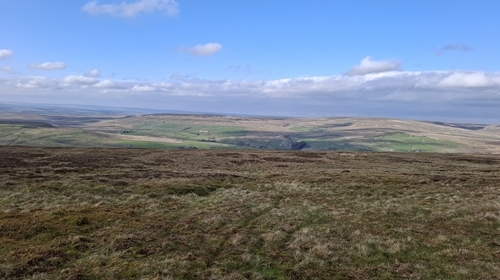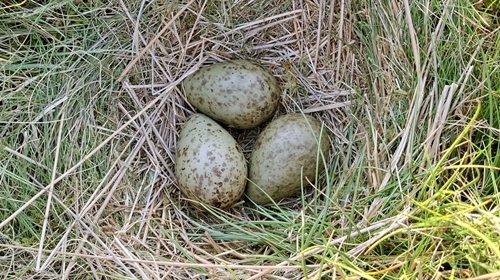By Henrietta Appleton, GWCT Policy Officer
A couple of weeks ago I (and my colleagues Eleanor and Sally) had the pleasure of being part of a Moorland Matters event. These informal get togethers of those with an interest in our uplands are a great way to experience moorland wildlife and to learn the perspectives of a wide range of varying interested parties. This year these events come at a pivotal moment in the future of moorland management given the recent raft of policy announcements.
Not only have we to respond to the Defra consultation on the proposed extension to the Heather and Grass Burning regulations by this weekend (25th May) but we have also had the publication of the England Peat Map a week ago (9th May) and are awaiting the revised Heather & Grass Management Code (formerly the burning code). The direction of travel these are taking us are based on Natural England’s review of the scientific evidence on the impact of Heather burning (just updated). Ultimately these policy announcements could affect 677,000 ha of peatlands. Hence the pivotal moment.

As we toured the moor as part of the Moorland Matters event both in early evening and crack of dawn what struck me most was the potential for biodiversity loss from these policies. Looking up the moors were full of curlew, lapwing, oystercatchers, golden plover, meadow pipits, skylarks and wheatears. Then some saw a majestic Marsh Harrier plus Kestrel and Merlin; and finally, there is England’s own wildlife spectacle, the male Black Grouse lekking display. Looking down there were mosses including Sphagnum, crowberry, cowberry, bilberry, cotton grasses, cloudberry, violas and of course Heather, grasses and sedges. Amongst these were the bilberry bumblebee and the Emperor moth caterpillar. All these exist because of the ecosystem created by a certain type of management that creates patches of different species and age classes of habitat. Plus for ground nesting species manages the threat of legally controllable predators during the breeding season. Arguably some such as the curlew and lapwing have now retreated to these oases of perfect habitat.
Yet this management is contentious because it is connected to the shooting of red grouse. The need to reduce our carbon emissions and protect (and even enhance) our carbon storage has given policy impetus to those opposed to this pursuit. They argue that burning the Heather releases carbon (it does at the time of burn) and damages the peat (it doesn’t if a best practice (Defra burning code) ‘cool’ burn). But they fail to acknowledge the carbon absorbed as the Heather grows back or the reduced risk of a severe wildfire due to managing the vegetation. I have gone into the detail of these counter arguments in previous blogs. The added concern, more relevant now the area under which heather burning is licensed could be 3 times the current area, is the impact that this will have on the myriad of species listed above.

All the species above are either moorland specialists or rely on its habitat for a key part of their life cycle – breeding. Change this by allowing a build up of single age vegetation (mainly Heather and bilberry which will shade out the underlying species) and the succession of scrub build up through self seeded saplings, Bracken and gorse encroachment and the ‘ecosystem’ changes. This will happen gradually in some remoter places as there will be high, open and exposed areas where this natural succession is limited by weather and aspect. But where vegetation grows more quickly due to anthropogenic influence from increased nitrogen deposition or due to climate change (warmer, wetter winters), the change could happen in 10-20 years (if a wildfire does not destroy it all before).
There is much talk about sustainability and not doing anything that might mean our children do not benefit as we do now. How can turning our moors silent be justified on this basis alone? Surely what we need is policy that supports sustainable ecologically-driven heather burning cycles that support multiple outcomes rather than one that focuses on reducing the 3% of emissions needed to prevent the 100% loss from wildfire.